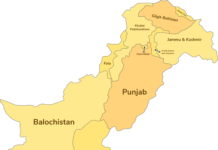LONDON: After failing last week, the 23 members of the OPEC+ group of oil producers will try again Monday to reach agreement on how much crude to put on the market.
Since May, the group has raised oil output little by little, after slashing it more than a year ago when the coronavirus pandemic crushed demand.
The current proposal is to increase output each month from August to December by 400,000 barrels per day, providing oil markets with an additional two million bpd by the end of the year.
But it is the suggestion of extending the agreement on incremental increases until the end of 2022 that has caused a hitch.
The hold-out is the United Arab Emirates, which on Sunday criticised that extension as unjust.
A video conference between OPEC members and their 10 allies has been scheduled for 1300 GMT to try and resolve the impasse.
UAE pushing back
In April 2020, as the coronavirus pandemic took hold, OPEC+ decided to withdraw 9.7 million bpd from the market and to gradually re-introduce it by the end of April 2022.
The strategy has worked fairly well, and the two leading oil contracts, for North Sea Brent and for West Texas Intermediate (WTI) have been bobbing at around $75 a barrel, an increase of 50 percent since the beginning of the year.
The last time oil prices were that high was in October 2018.
But reintroduction has stalled several times because of developments in the Covid-19 crisis, and at present, the alliance is still not pumping 5.8 million bpd of the initial figure.
Consequently the April 2022 deadline now seems too close, and some members want to extend the reintroduction period until December 2022 — which is what Abu Dhabi objects to.
The United Arab Emirates is prepared to extend the agreement if necessary, its Energy Minister Suhail Mohamed Al-Mazrouei told the WAM news agency.
But it wants the reference output levels raised to ensure they are fair.
The UAE’s level, established in October 2018, is 3.17 million bpd, well below its effective potential output level of 3.8 million in April 2020, just before the sharp output cuts took effect.
No-deal prospects
It was this question that caused last week’s OPEC talks to break down.
The meetings, more used to big hitters Russia and Saudi Arabia setting the agenda, were confronted with the UAE’s refusal to toe the line.
“What was expected to be a relatively peaceful OPEC+ meeting has become a very lengthy and uncertain one,” said commodity analysts Kpler.
“The prospect of a no-deal outcome — as well as a UAE OPEC exit — has risen materially, even if it has not yet fully entered into firm base-case territory,” she wrote.
“The White House may need to work the phones over the weekend to help bridge the gap and prevent a breakdown scenario on Monday that could send prices spiralling higher.”
But the OPEC alliance is used to disputes between its members.
At the beginning of the year it managed to negotiate its way through a brief, but intense spat between Russia and Saudi Arabia over oil prices.
























